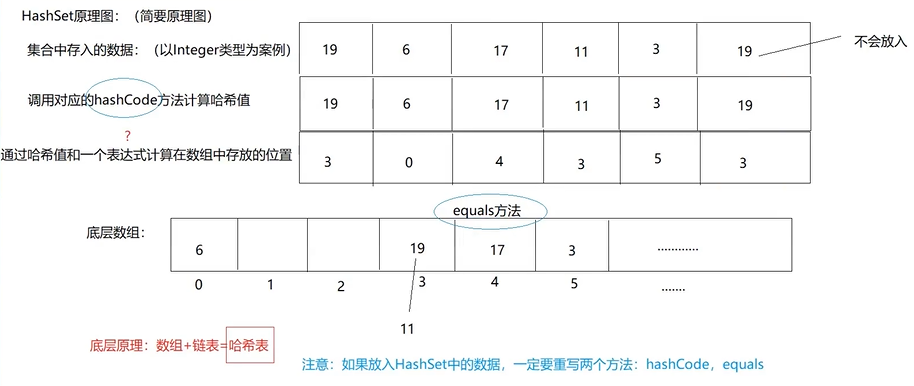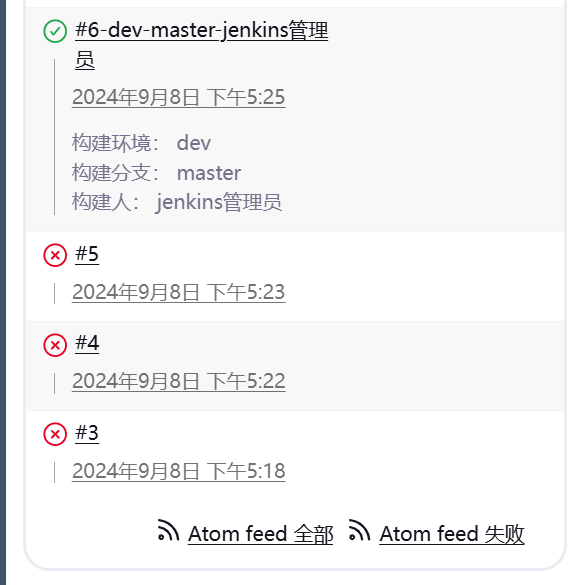HashSet
特点
-
放入Integer类型数据
//创建一个HashSet集合:HashSet<Integer> hs = new HashSet<>();hs.add(19);hs.add(5);hs.add(20);hs.add(19);//存重复数据hs.add(41);hs.add(0);System.out.println(hs.size());//6个数据,只存了5个System.out.println(hs);//[0, 19, 20, 5, 41] 唯一,无序//注:数据重复储存,只有第一个数据被存入。 -
放入String类型数据
HashSet<String> hs = new HashSet<>();hs.add("hello");hs.add("apple");hs.add("banana");hs.add("html");hs.add("apple");hs.add("css");System.out.println(hs.size());//5System.out.println(hs);//[banana, apple, css, html, hello] -
放入自定义的引用数据类型的数据:
HashSet<Student> hs = new HashSet<>();hs.add(new Student(19,"lili"));//之前Integer和String不用对象是因为自动装箱hs.add(new Student(20,"lulu"));hs.add(new Student(18,"feifei"));hs.add(new Student(19,"lili"));hs.add(new Student(10,"nana"));hs.add(new Student(11,"jiejie"));System.out.println(hs.size());//6System.out.println(hs);//发现两个lili都存入了! //输出:[Student{age=18, name='feifei'}, Student{age=10, name='nana'}, // Student{age=20, name='lulu'}, Student{age=19, name='lili'}, // Student{age=19, name='lili'}, Student{age=11, name='jiejie'}]- 上面自定义的类型不满足 唯一,无序的特点。为什么呢?、
因为Student没有重写hashCode和equals(底层原理分析)
简要底层原理

- 底层=数组+链表
- 数组都有下标
- 存入的数据--->每一个数据通过hashCode计算哈希值(这里Integer类型的哈希值与存入的数据一样)
- 把每个数据的哈希值通过一个表达式计算出存入底层数组的下标(可能不同哈希值算出一样的)
- 分别将数据存入对应下标的数组中
- 若存入时,该位置有数据---->要存入的数据与该数据做比较(equals方法)
- 若相等,则不存入(相当于丢弃)
- 若不等,在此位置追加出一个链表,将要存入的数据放在链表处(上图11与19)
疑问
- 底层数组长度是多少
- 数组的类型是上面
- hashCode,equals方法真的调用了吗
- 哈希值和一个表达式算出存放位置,底层表达式是什么
- 同一个位置的不同数据是向前放还是向后放(是19后加链表11;还是11后加链表19)
- 放入数组中的数据,是直接放的吗,是否封装成对象了










